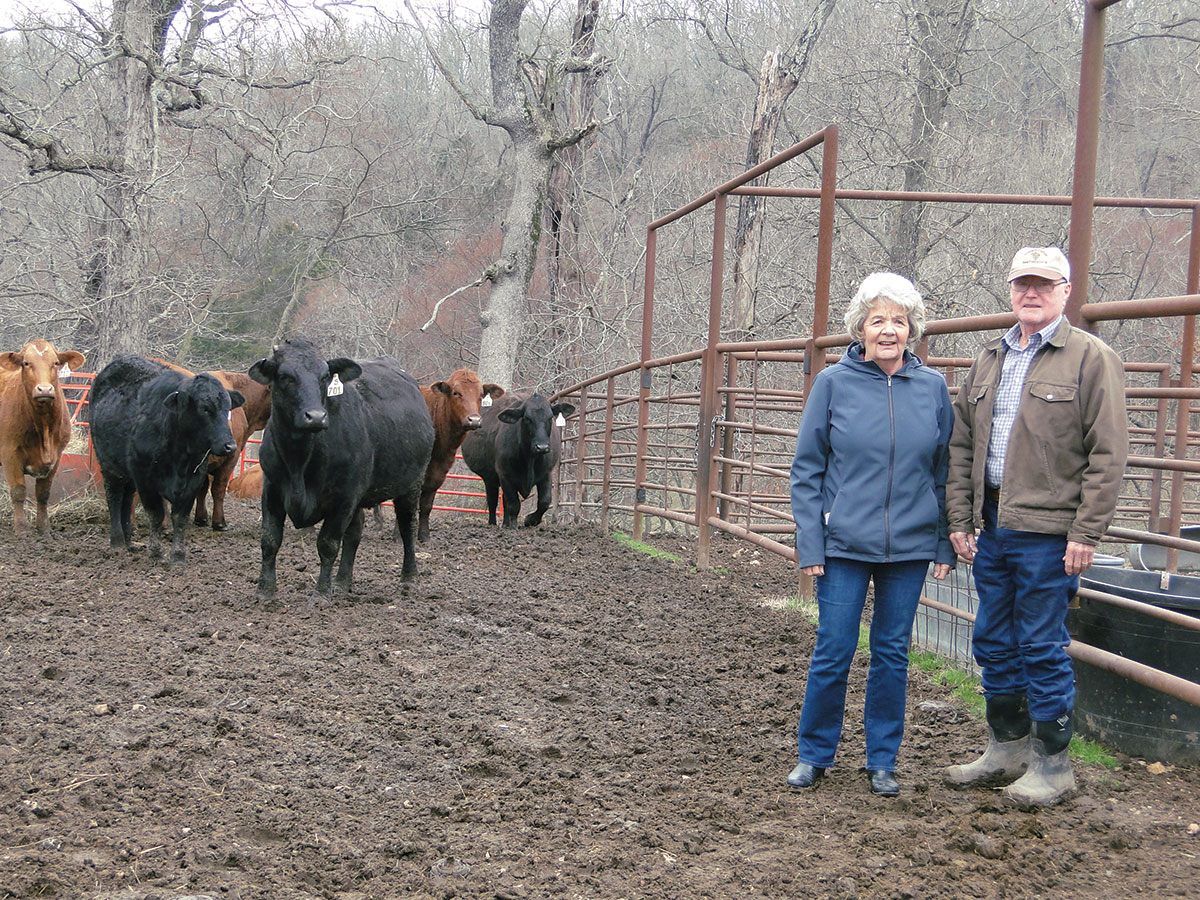
Tom and Deidra Hood selected Beefmasters because of the breed’s efficiency
Before Tom Hood met his wife-to-be Deidra in 1967, Tom, his brother Jeremy and his dad John, bought 180 acres about a year after moving to Arkansas from Texas.
When a neighbor’s land came up for sale, they bought it for $4,000 to be paid off in four years at 8 percent interest.
Then Tom went out on his own and purchased the original acreage for Hidden Hollow Beefmasters. The Illinois River Valley land was overgrown and without a place to live. Tom and Deidra – who have been married for 50 years, and have two children and six grandchildren – lived in a mobile home for a year while building their home, using lumber harvested from the overgrown-land. The farm gradually expanded to 1,000 acres of both owned and leased.
Tom maintains the best advice he ever received was from animal science professor Bob Kropp. Bob explained to be successful in the cattle business, producers shouldn’t raise what they want but rather what others want to buy.
“We have followed that wisdom ever since we began with a small commercial herd. It was heavily influenced by Charolais, Angus and Simmental and bred by Beefmaster bulls,” Tom said.
Several important steps marked their progression to raising Beefmaster breeding cattle and the importance of the Kropp’s advice. The first was that many buyers were willing to pay more for higher-quality calves and bulls. With the Beefmaster reputation for docility, milkability and hardiness as well fewer heat issues, Tom and Deidra, who served as a teacher for 25 years before becoming an intern teacher coordinator, decided to go with the Beefmaster breed.
At the time they made that decision, grain was exceedingly expensive, and they discovered the Beefmaster bulls were very efficient without grain, a big help getting them started. To accomplish the transition as economically as possible, Tom and Deidra used the upgrading program in addition to buying a few registered Beefmaster females.
When the preference for black cattle emerged, Tom made a point of finding a high-quality black bull because he recognized the market impact of the developing preference. A third was recognizing that buyers actively sought polled bulls.
“Fairly early on, we had a very sorry-looking polled bull, but the fact that I could list the animal as one to be sold drew buyers to the farm, even though they ended up purchasing our better, non-polled bulls,” Tom explained.
The farm now supports 90 registered polled Beefmaster breeding females and three herd sires, all of which are either black or red. The herd is a co-mingled partnership with their son Wesley.
Calf production occurs on the home place. Then animal development, before being sent to the feedlot or selling as breeding stock, takes place on Wesley’s farm. The quality of the Hood bulls is indicated by their being named the 2017 Beefmaster Breeder of the Year.
An example is Tom purchasing a herd bull named Schneider 0481 in Texas. Though the bull seemed ordinary, Tom saw potential. The bull is now well-known for producing calves with excellent carcass traits and high IAF numbers.
Tom uses AI on 5 to 30 percent of the females, depending upon the needs of the year and if he can find the appropriate bulls to increase herd quality. In addition, embryo transplants are occasionally used to obtain calves from a particular bloodline.
In order to maintain breeding standards, calves are heavily culled with the less desirable bull calves being castrated.
The Hoods retain ownership of all calves until slaughter in order to gather data. That data helps determine the most productive animals and drives future breeding decisions.
The data is also sent to the National Beefmaster Association database where it is incorporated into the association’s impressive EPD records. The records ensure perspective buyers they get as accurate a picture as possible of the breed’s potential, as well as that of individual animals. Data about intramuscular fat and ribeye size are especially important.
When potential buyers come to the farm, they sometimes ask Tom which bull he would pick. He typically explains that he can’t make a recommendation because he doesn’t know the perspective buyer’s herd.
“During college, Tom worked at a sale barn in the back,” said Deidra. “That experience gave him an insight into the inner workings of sales, something that helped us develop a good sales program.”
The Hood program is geared toward selling off the farm to mom and pop operations seeking breeding stock designed for mountainous terrain. They sell bulls, open and bred heifers and occasionally a cow/calf pair.
“This business takes heart,” Tom said. “You have to go in and stay in because going back and forth simply doesn’t work.”






